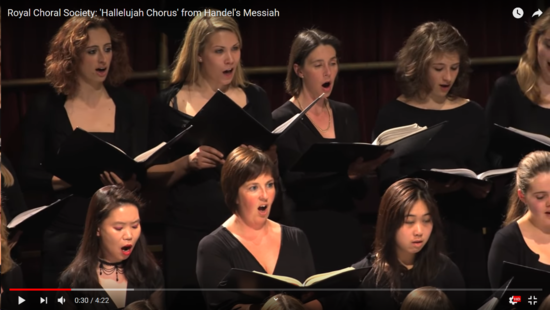Preparatory A (from 2+). Lesson 33

Your FREE Demo version is here
Your full version access is here
How was week? Did you have lessons with your child? How they went? I am always happy to read posts on our forum and make suggestions. It makes your learning and teaching experience even more interactive!
Today in our Pedagogy class we are going to learn more about:
The Magical Number Seven

Please, remember the amount of maximum elements for your child's memory. Don't expand the number 7!
The best practice for this age is 5+/- 2
When we give your child to practice with more notes/cards, we are helping him to expand his memory with the help of music.
Today I am going to explain you about visual perception of the Grand Staff in accordance with this golden rule:
Let's take a closer look at the music score and apply this rule to lines and spaces:
The ten thin lines of the grand staff are barely distinguishable to the unprepared eye. It is well known that a person can follow no more than seven homogeneous objects with his gaze. And seven, only if he’s really pushing it! But the spaces between the lines are also ‘lines’ in music notation. A child is expected to keep up with not ten, but as a minimum, twenty-two objects! He has to navigate an entire jungle of lines and spaces… and hardly has any reference points.
To keep my beginners from getting lost in this maze, I have numbered each line in the treble and bass clefs with the digits 1, 2, 3, 4, and 5. The supplementary line for the middle Do got the number 0. Contrary to the traditional practice, the lines of the bass clef are numbered from top to bottom; this makes more sense.
The music staff represents a thermometer, with the 0 in the middle. The music system is quite symmetrical, like a mirror, or a numerical scale. The second Do and the Do of the minor octave are located between lines 3 and 4. I tinted these spaces a light bluish-gray color, making both of these Dos additional places of reference.
Open your Gentle Piano program and press B on your computer keyboard. You will see that the space between 3rd and 4th lines will become blue. Press B again to remove it! Use this option to give your nd your toddler's eyes some break, when reading becomes a challenge.
This option works for all the visual modes from 1 to 6.
Thus, the grand staff has been visually separated into four sections. In each of them, there are only 5-6 lines and spaces; it is much easier to keep up with them now. With this image, the territory of the grand staff is simplified for familiarization! The intimidating ‘scary’ 10 lines and 12 spaces quickly become ordinary space.
Only after all 22 note lines are familiarized can work begin on the supplementary lines. Until the skill of reading the ordinary lines is worked out, how can the student possibly read the additional ones?
...
 GENTLE PIANO
GENTLE PIANO
Download and add to your library the theme from Hallelujah by Handel
Ask your toddler to place the cards as the melody of the Right and Left hands go
....
 GENTLE PIANO
GENTLE PIANO
Download and add to your library the theme from Hallelujah by Handel
Play and ask your toddler to play Right and Left hands of the piece.
If you want to take a challenge, find complete version of the piece in your Gentle Piano: Favorite Classic 2
This assignment is for you. You may ask your toddler to help you, but don't push!
....
Enjoy your week!
Sincerely yours,
Hellene Hiner

PS
All the lesson plans:
for 24 months to 3 year old
3 year old to 5 year old
5+ year old
Intensive Course for Adults-beginners
Always check here, if there any recital in the progress! You and your child will benefit a lot from the participation.
Your place to start your Diary is here


